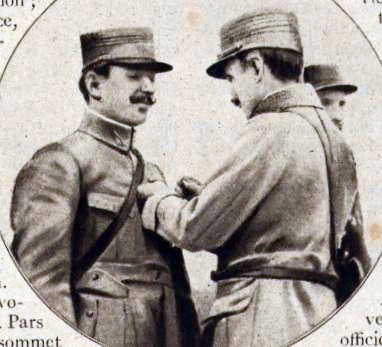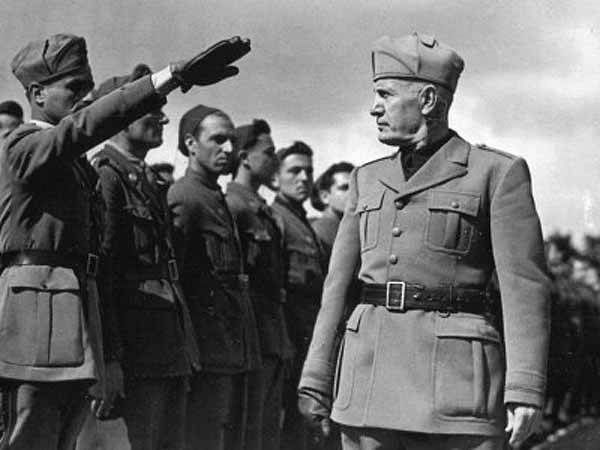|
List Of World War II Aces From Ireland ...
This is a list of flying aces in World War II from Ireland. Aces High,Christopher F. Shores & Clive Williams, Grub Street, London 1994 For other countries see List of World War II aces by country. * Brendan Eamonn Fergus Finucane RAF No.13 No.65 & No.602 Sqn, Hornchurch Wing; RCAF No.19 & No.452 Sqn; KIA 15/Jul/1942 *John Martin Bruen FAA 5 801, 759, 803, 778, 800 & 836Sq * John Ignatus Kilmartin RAF 12.33 1, 43, 602, 313, 128 & 504Sq, Hornchurch Wing, 136 Wing, 910 Wing * James Reginald Bryan Meaker RAF 8 46, 263 & 249Sq; KIA 27/Sep/1940 *Rupert Frederick Smythe RAF 6 29, 504 & 32Sq * Robert Wilkinson Turkington RAF 9.16 124, 611, 43, 72, 241 & 601Sq; KIFA Apr/1945 Notes and references {{Lists of flying aces Ireland Ireland (, ; ; Ulster Scots dialect, Ulster-Scots: ) is an island in the North Atlantic Ocean, in Northwestern Europe. Geopolitically, the island is divided between the Republic of Ireland (officially Names of the Irish state, named Irelan ... [...More Info...] [...Related Items...] OR: [Wikipedia] [Google] [Baidu] [Amazon] |
Flying Ace
A flying ace, fighter ace or air ace is a military aviation, military aviator credited with shooting down a certain minimum number of enemy aircraft during aerial combat; the exact number of aerial victories required to officially qualify as an ace varies, but is usually considered to be five or more. The concept of the "Ace (military), ace" emerged in 1915 during World War I, at the same time as aerial dogfighting. It was a propaganda term intended to provide the home front with a cult of the hero in what was otherwise a Attrition warfare, war of attrition. The individual actions of aces were widely reported and the image was disseminated of the ace as a chivalrous knight reminiscent of a bygone era. For a brief early period when air-to-air combat was just being invented, the exceptionally skilled pilot could shape the battle in the skies. For most of the war, however, the image of the ace had little to do with the reality of air warfare, in which fighters fought in formation an ... [...More Info...] [...Related Items...] OR: [Wikipedia] [Google] [Baidu] [Amazon] |
World War II
World War II or the Second World War (1 September 1939 – 2 September 1945) was a World war, global conflict between two coalitions: the Allies of World War II, Allies and the Axis powers. World War II by country, Nearly all of the world's countries participated, with many nations mobilising all resources in pursuit of total war. Tanks in World War II, Tanks and Air warfare of World War II, aircraft played major roles, enabling the strategic bombing of cities and delivery of the Atomic bombings of Hiroshima and Nagasaki, first and only nuclear weapons ever used in war. World War II is the List of wars by death toll, deadliest conflict in history, causing World War II casualties, the death of 70 to 85 million people, more than half of whom were civilians. Millions died in genocides, including the Holocaust, and by massacres, starvation, and disease. After the Allied victory, Allied-occupied Germany, Germany, Allied-occupied Austria, Austria, Occupation of Japan, Japan, a ... [...More Info...] [...Related Items...] OR: [Wikipedia] [Google] [Baidu] [Amazon] |
Ireland
Ireland (, ; ; Ulster Scots dialect, Ulster-Scots: ) is an island in the North Atlantic Ocean, in Northwestern Europe. Geopolitically, the island is divided between the Republic of Ireland (officially Names of the Irish state, named Irelanda sovereign state covering five-sixths of the island) and Northern Ireland (part of the United Kingdomcovering the remaining sixth). It is separated from Great Britain to its east by the North Channel (Great Britain and Ireland), North Channel, the Irish Sea, and St George's Channel. Ireland is the List of islands of the British Isles, second-largest island of the British Isles, the List of European islands by area, third-largest in Europe, and the List of islands by area, twentieth-largest in the world. As of 2022, the Irish population analysis, population of the entire island is just over 7 million, with 5.1 million in the Republic of Ireland and 1.9 million in Northern Ireland, ranking it the List of European islands by population, ... [...More Info...] [...Related Items...] OR: [Wikipedia] [Google] [Baidu] [Amazon] |
List Of World War II Aces By Country
Fighter aces in World War II had tremendously varying kill scores, affected as they were by many factors: the pilot's skill level, the performance of the airplane the pilot flew and the planes they flew against, how long they served, their opportunity to meet the enemy in the air (Allied to Axis disproportion), whether they were the formation's leader or a wingman, the standards their air service brought to the awarding of victory credits, et cetera. Towards the end of the war, the Axis powers had largely exhausted their supply of skilled pilots and the replacements did not have as much opportunity to gain enough experience to be successful. Additionally, national policies differed; German, Italian, and Japanese pilots tended to return to the cockpit over and over again until they were killed. It is not clear what impact each nation's rules for score crediting have on the counts listed below. Germans credited a shared victory to only one pilot, while the French credited full victo ... [...More Info...] [...Related Items...] OR: [Wikipedia] [Google] [Baidu] [Amazon] |
Paddy Finucane
Wing Commander Brendan Eamonn Fergus Finucane, ( ; 16 October 1920 – 15 July 1942), known as Paddy Finucane among his colleagues, was an Irish Second World War Royal Air Force (RAF) fighter pilot and flying ace—defined as an aviator credited with five or more enemy aircraft destroyed in Aerial warfare, aerial combat. Born into a Catholic family, Finucane grew up during the period also known as the "early troubles" and the Irish Civil War. In 1936, the family moved to England, where he developed an interest in aviation. Finucane was keen to fly, applied to join the RAF and was accepted for training as a pilot in August 1938. After a shaky training career, in which he crash-landed on one occasion, he received news that he had completed flight training. In June–July 1940, he began conversion training on the Supermarine Spitfire. On 13 July, Finucane was posted to No. 65 Squadron RAF, No. 65 Squadron at RAF Hornchurch. Finucane's first victory was scored on 12 August 19 ... [...More Info...] [...Related Items...] OR: [Wikipedia] [Google] [Baidu] [Amazon] |
Fleet Air Arm
The Fleet Air Arm (FAA) is the naval aviation component of the United Kingdom's Royal Navy (RN). The FAA is one of five :Fighting Arms of the Royal Navy, RN fighting arms. it is a primarily helicopter force, though also operating the Lockheed Martin F-35 Lightning II, F-35 Lightning II carrier-based stealth fighter jointly with the Royal Air Force. The RAF was formed by the 1918 merger of the RN's Royal Naval Air Service with the British Army's Royal Flying Corps. The FAA did not come under the direct control of the Admiralty (United Kingdom), Admiralty until mid-1939. During the Second World War, the FAA operated aircraft on ships as well as land-based aircraft that defended List of Royal Navy shore establishments, the Royal Navy's shore establishments and facilities. History Beginnings British naval flying started in 1909, with the construction of an airship for naval duties. In 1911 the Royal Navy graduated its first aeroplane pilots at the Royal Aero Club RAF Eastchu ... [...More Info...] [...Related Items...] OR: [Wikipedia] [Google] [Baidu] [Amazon] |
John Kilmartin (RAF Officer)
John Kilmartin, (8 July 1913–1 October 1998) was an Irish flying ace of the Royal Air Force (RAF) during the Second World War and the postwar period. He is credited with the destruction of at least fourteen aircraft. From Dundalk, Kilmartin joined the RAF in 1936 and once his training was completed, he was posted to No. 43 Squadron. After the outbreak of the Second World War, Kilmartin joined No. 1 Squadron and was sent to France. Flying Hawker Hurricane fighters, he claimed several aerial victories during the Battle of France. After the campaign in France, he briefly served as an instructor before rejoining No. 43 Squadron and flying in the Battle of Britain. He achieved further victories in the fighting over England. In the later years of the war he held a series of squadron commands, and then was a wing leader. He was serving as a staff officer at the end of the war. Remaining in the RAF during the postwar period, he commanded No. 249 Squadron for a time before being a ... [...More Info...] [...Related Items...] OR: [Wikipedia] [Google] [Baidu] [Amazon] |
James Meaker
James Meaker (19 January 1919–27 September 1940) was an Irish-born flying ace of the Royal Air Force (RAF) during the Second World War and the postwar period. He is credited with the destruction of at least nine aircraft. From Kinsale, Meaker joined the RAF in June 1939 and once his training was completed, he was posted to No. 46 Squadron. He was subsequently transferred to No. 263 Squadron and flew Gloster Gladiator fighters during the campaign in Norway. Afterwards he was posted to No. 249 Squadron and flew with this unit during the Battle of Britain, shooting down several German aircraft. Killed in action on 27 September 1940, aged 21, he was posthumously awarded the Distinguished Flying Cross. Early life James Reginald Bryan Meaker was born on 19 January 1919 in Kinsale, County CorkIreland. His parents were from Sussex, his father serving in Ireland as an officer in the British Army's Royal Fusiliers. Meaker went to Chichester High School and once his education was ... [...More Info...] [...Related Items...] OR: [Wikipedia] [Google] [Baidu] [Amazon] |
Robert Wilkinson Turkington
Robert Wilkinson "Paddy" Turkington, (1920 – 29 July 1945) was a Northern Irish Second World War Royal Air Force (RAF) fighter pilot and flying ace. He had 9 confirmed kills, 3 shared kills, 1 probable kill, and 4 damaged aircraft; some sources credit him with 11 kills. Early life and education Turkington was born in 1920 in Mhow, British Raj or in Derrytrasna, County Armagh, Northern Ireland. Between 1933 and 1939, he was educated at Lurgan College, a grammar school in Craigavon, County Armagh. Military service Turkington enlisted in the Royal Air Force Volunteer Reserve (RAFVR) in 1940, and trained as a pilot in Canada. On 1 October 1942, he was promoted from pilot officer (on probation) to the war substantive rank of flying officer (on probation). He was promoted to war substantive squadron leader on 7 January 1944. Turkington first served with No. 43 Squadron RAF, and flew a Hawker Hurricane with them on the Dieppe Raid of 19 August 1942. By November 1942, he was fightin ... [...More Info...] [...Related Items...] OR: [Wikipedia] [Google] [Baidu] [Amazon] |



